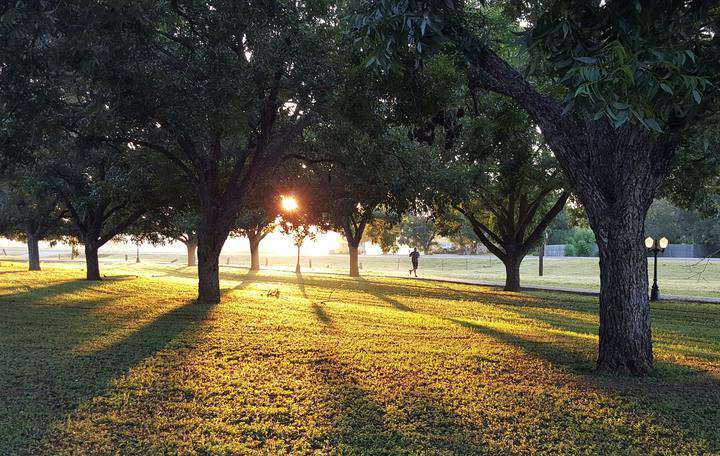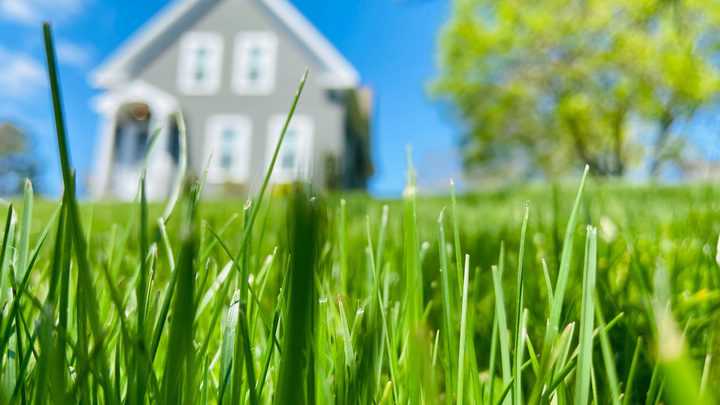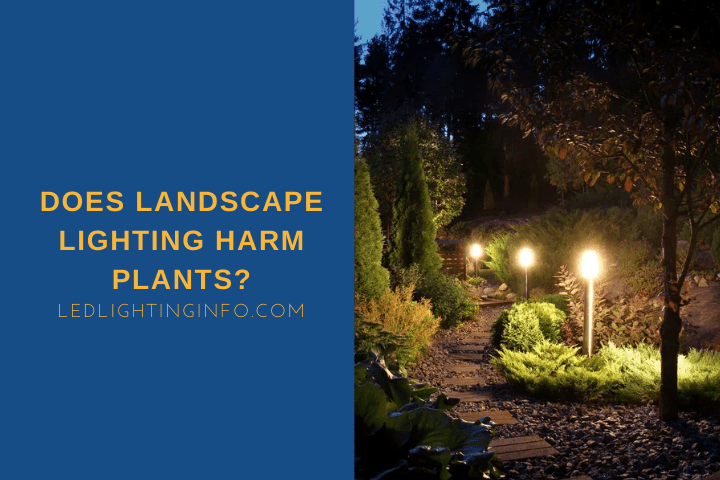If you’ve cultivated a beautiful garden, you might be considering installing landscape lighting to best show it off.
After all, why only enjoy the fruits (literal and metaphorical) of your labor during the day?
Wouldn’t it be nice to relax in the evening and look out over your stunning flowers, vibrant trees, and luscious lawn after the sun’s gone down?
Except, you may be concerned that lights could harm the growth of your plants. Or perhaps they could boost it since plants love light.
Landscape lighting can disrupt the growth of your plants, causing a delay in flowering or a reduction in fruit production. It can also cause trees to suffer during the winter months. It’s best to only use landscape lighting when needed, so a timer is essential.
Let’s break that down a little more and look at:
- How landscape lighting affects plants
- Whether the extra light can harm trees
- If landscape lights can improve your lawn
Does Landscape Lighting Affect Plant Growth?

While it’s common knowledge that plants require light for photosynthesis, it’s a misconception that more light is, therefore, good for them.
Plants react to the duration of light to know when they need to change and develop.
During shorter days, they remain in a vegetative state, waiting for the weather to improve so that they know when to flower.
Unsurprisingly, artificial lights are not as effective as the sun at providing the light that plants need.
But their proximity to your garden does mean that plants will respond to your lights.
So, if you’re using landscape lights, there’s a chance you’re going to confuse your plants.
They’ll be getting more light than they’re used to, so they may flower too early.
If that happens in fruit-bearing plants, the flowering being disrupted could mean fewer insects are pollinating.
This can lead to less production in cucumbers, tomatoes, and bell peppers.
Flowers and plants can mutate, too, through a process called phototropism.
This is where plants will grow towards the light, and while the sun will be the primary light source, the plants could move in the longer evenings.
This can cause unnatural growths and mutations, some of which you may not notice. Still, it could give your plants an odd look or a weakness in their structure as they grow in different directions.
These are potential issues, but how much you need to worry about this depends on many factors.
These include how much you use your lights and the color spectrum of the lights you’ve chosen.
Plants require blue light to grow, and red light wavelengths to stimulate flower production.
While the sun will provide all light spectrums, most artificial lights won’t.
Color-changing white lights will produce a range between 2200K and 6500K, which could give plants everything they need to grow.
Most landscape lights are standalone warmer lights at the lower end of the Kelvin scale.
So they won’t cause a lot of growth in plants.
If you’re concerned about the effect that landscape lighting could have on your plants, it’s best to use a timer to ensure that they’re only switched on while you need them.
That way, you’re not constantly exposing your plants to extra light which can disrupt their natural cycles.
Does Increased Light Exposure Harm Trees?

Unless you’ve trained your landscape lighting directly onto a tree, it’s unlikely to react to the ambient glow and will function as expected.
However, many people do want to highlight a tree as part of their lighting setup.
It’s not uncommon to have lights directly pointed at the trunk and leaves of a tree so that it’s beautifully illuminated in the evening.
Trees also rely on the amount of sunlight to track the seasons.
Plants and trees are incredibly clever!
So if you’re constantly lighting up a tree for longer hours than it used to, it might not be prepared for the colder months.
This can mean deciduous trees are dropping their leaves late, and evergreen trees keep their pores open.
Normally deciduous trees drop leaves, and evergreen trees close the leaf pores to prevent excess water from being retained.
That’s important because colder temperatures will obviously freeze water.
If a tree contains too much, it can suffer frost damage, which could damage it visually (expect to see cracks form) and, if serious, even kill the tree.
If you’re using landscape lighting pointed directly at a tree, make sure to reduce the number of hours it’s illuminated as you get through the fall season.
This will encourage the tree to carry out its normal winter preparation.
Will Landscape Lights Improve Lawn Growth?

Whether landscape lights will impact lawn growth depends entirely on the type of light, the distance from the grass, and how much sunlight it already gets.
Firstly, grass will likely only grow under artificial lights if those lights are at a cooler temperature with more blue light.
This isn’t a common choice for landscape lighting because you usually want a more gentle glow.
Something that replicates the harsher white of daylight isn’t usually the preferred option.
Secondly, grass can only grow so far, so if it’s already getting a lot of sunlight, then it’s unlikely to be impacted much at all.
It’ll do most of its work during the day.
But if your landscape lights are positioned in a way to add extra light to patches of your lawn that are usually shaded, and you’re using lights with the right color spectrum, then yes, you could see improved growth.
However, they’ll never be as strong as the sunlight, so don’t expect landscape lights to give shaded lawn patches the boost they need to grow at the same rate as areas that get sunlight.
Blades of grass may grow in the direction of the artificial light too. Still, with grass, it’s not normally that easy to tell, especially if you’re keeping your lawn maintained and regularly mowed.
Also read: How To Keep Bugs Away From Landscape Lights?
Final Words
Artificial lights can definitely have some impact on your plants. Still, they’re never going to be as strong as the best natural light source in the solar system.
Despite that, it’s a good idea to control your lights with a timer and minimize their use if you want to avoid disrupting the natural cycles of your carefully maintained garden.
Have you had any weird experiences with the plants and flowers underneath your garden’s lights?
Tell me about your ideas on best managing your landscape lights and protecting your flora.

